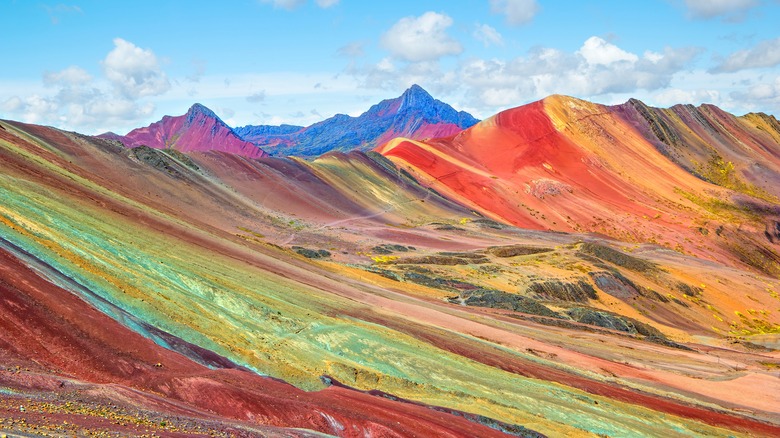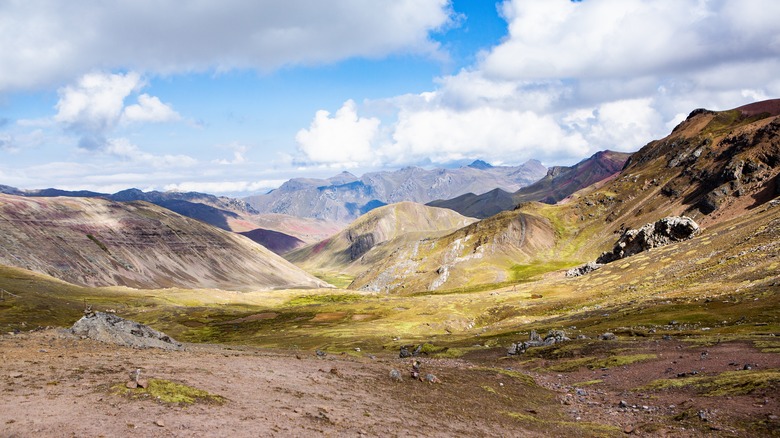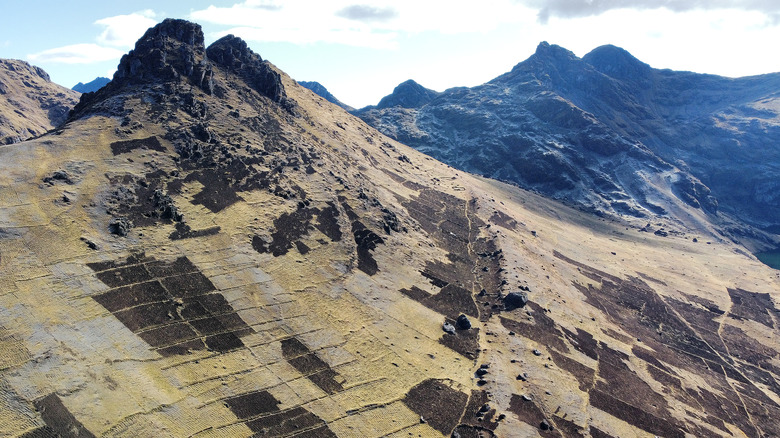The Unusual, Liquid Way The Andes Mountains Are Formed
It's easy to take ancient things for granted. After all, their life cycles are so much longer than the mere 70 to 80 years of a human life. On a long enough time scale, everything rises and dies: species, oceans, mountains, planets, even the entire universe. But to us, it's simple to look up at mountain peaks and proclaim, "They, at least, are eternal."
Nothing could be further from the truth, though. Earth's mountains are kind of like the features of a body still undergoing change. Some mountains are super old and look rounded, eroded, and often have greenery along them. For instance, recent estimates place the low, rolling Appalachian Mountains at 300 million years old, as ScienceDaily explains. Other mountains are newer, sharper, craggy, and rise high like the massive, toothy Himalayas formed only 40 to 50 million years ago, as the U.S. Geological Survey describes. Both of these mountain ranges formed through a process called "subduction," when pieces of the Earth's eggshell-like crust — its tectonic plates — smashed together. In either continental (on land) or oceanic (in the sea) subduction, one plate slides up over another, or two plates crumple like paper at their edges, as Live Science says. And in the middle? We get a new row of mountains.
Researchers, however, are uncovering another, very unusual way mountains can form: The underside of the crust can melt and fall off, and the surface above pops up, as Space.com describes. This is how the Andes mountains formed.
A mantle dripping like honey
It's admittedly really cool to imagine the outer coating of a planet's surface dripping down into its interior and the recoil popping the planet's surface back up. In more rigorously scientific terms, such "symptomatic lithospheric drips" happened under the Andes region of South America as recently as 20 million years ago, as Communications Earth & Environment reports (published on Nature). In the study, researchers used three-dimensional modeling to map out the "deformational response" of the region's upper crust down into the lithosphere beneath it. In other words, they checked what caused the crust to form the way it did.
To recap Earth geology a bit, people typically envision our planet as being composed of three basic layers: crust (outer later), mantle (middle later), and core (innermost part). This is more or less true. As Space.com explains, we've got a rocky outer planetary surface stable enough to build an entire civilization on. But the mantle underneath is itself actually composed of several layers, from harder and cooler to softer and hotter. The upper mantle is kind of an extension of the crust above and is tethered to its tectonic plates. The lower mantle, however, is composed of more soupy, fluid, "plastic-like" rocks. That's why the crust sometimes slips like an ice skater, and the end result is earthquakes. And the mantle under the Andes? It's hot enough to melt and have chunks of it drip off like honey-filled balloons.
Mountainous growth: rounds one, two, and more
The Andes didn't form only from lithospheric dripping but also by a combination of subduction plus multiple later instances of lithospheric dripping, as Space.com explains. At first, tectonic plates in the distant past smashed together like usual, and the collision sent Earth's crust jutting into the sky. This created the original Andes mountain formation. Afterward, the plates continued to grind together. Some parts thickened, rocky material intermingled, and patches of the crust's underside got super hot. Those pieces bubbled and fell off like a subterranean avalanche. The ground above that avalanche then shot up like a snapped rubber band, and we got some new mountains interspersed within the entire Andes range.
As ScienceAlert says, this happened multiple times over the past 66 million years during Earth's geological "Cenozoic era." We know this because areas like the Puna plateau, for instance, are higher than the Altiplano region of the Andean plateau and contain irregularities like volcanic areas and large basins. To check such assertions, researchers developed synthetic materials that mimic the consistency of the Earth's layers and poured them into a plexiglass tank. According to Space.com, they used a silicon polymer called polydimethylsiloxane (PDMS) for the lower mantle, which is about 1,000 times thicker than table syrup; PDMS plus modeling clay for the upper mantle; and a sandy mixture of mini ceramic and silica balls for the crust. "It was like creating and destroying tectonic mountain belts in a sandbox," researcher Julia Andersen said in a statement (via the University of Toronto).


